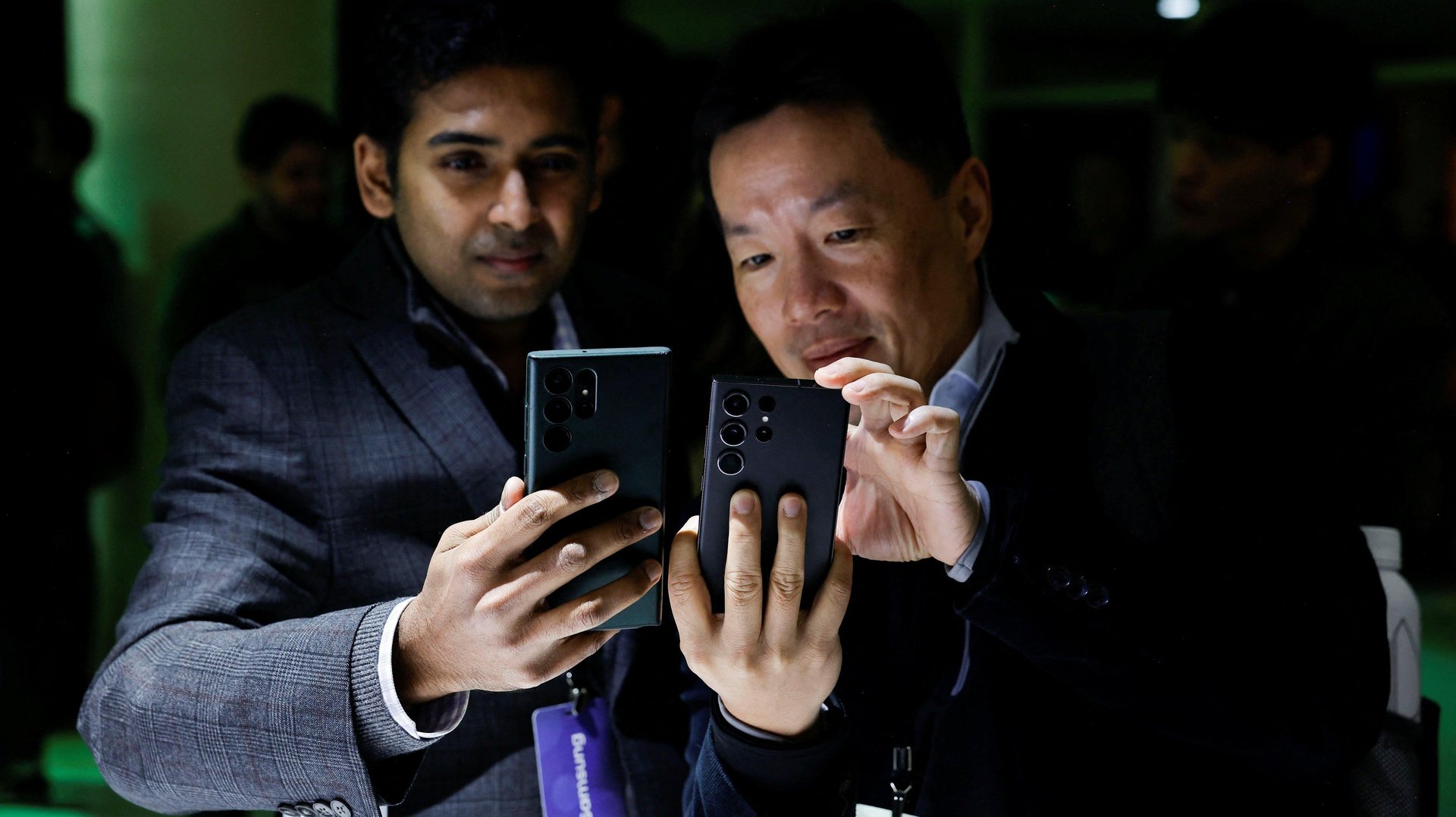Are satellite-based calls the future of mobile phones?
AST SpaceMobile's first mobile call via satellite is another step towards global connectivity.

Using a Samsung Galaxy, an engineer outside of Midland, Texas, dialed another mobile phone in Rakuten, Japan, and said hello. It was a prosaic communications miracle of the modern world—but with a 21st century twist. Instead of connecting through a nearby cell tower, the Galaxy was transmitting and receiving signals from a satellite more than 300 miles overhead.
Suggested Reading
This was the first voice call made by satellite relay using an unmodified mobile phone, according to AST SpaceMobile (NASDAQ:ASTS), the company that held the demonstration earlier this month. While specialized (and expensive) satellite phones have existed for decades, and the newest iPhones can send text messages through a satellite relay, mobile phones designed to work with cell towers a few miles away hadn’t previously been able to use high bandwidth applications in space.
Related Content
While mobile phones feel ubiquitous, there are still vast expanses around the world where they don’t work because complicated geography or low population density makes installing cell towers more trouble than it’s worth. AST SpaceMobile, which is working with telecom giants like AT&T and Vodafone, is one of several firms betting that filling these gaps from space will be a profitable business model.
Notably, Apple has partnered with the satellite operator GlobalStar to offer emergency text message services to users of the newest iPhones. SpaceX is working with T-Mobile to use its Starlink network for similar low-bandwidth messaging. And Lynk, another space start-up, wants to use its own satellites to provide coverage in partnership with terrestrial phone companies.
How does a mobile phone connect with a satellite?
AST SpaceMobile, which went public in 2021 through a SPAC transaction, has the most ambitious vision of these firms given that it plans to offer enough bandwidth for voice calls. The challenge for all of these firms is that mobile phones don’t have a ton of transmitting power or large antennas, so software that tricks the phone into communicating with a satellite is required. Even then, the distances at play make high-quality connections difficult to achieve.
For AST, the solution is straightforward: Put a huge antenna on your satellite. Last year, the company launched a spacecraft called BlueWalker-3, which has a 693 square foot antenna that is likely the largest ever placed in low-earth orbit. That allows it to communicate more easily with mobile phone signals.
It also makes the spacecraft the subject of concerns about space debris and astronomical observations. NASA’s initial worries about the size of the vehicle led AST to strike a special information sharing agreement with the agency. And space scientists are still concerned that, like the other vehicles proliferating in space close to our planet, Bluewalker-3 could interfere with large telescopes peering into the cosmos.
Will people pay for this kind of space connection?
The demand for connectivity seems to be insatiable, with more and more people and services moving online. But the biggest demand for coverage outside of existing terrestrial networks is in rural areas and countries that are less economically developed, which limits the amount that users can be charged.
Meanwhile, space infrastructure is still expensive. Apple has spent more than $300 million to add space connectivity to its iPhones, but that’s a rounding error compared to the $205 billion worth of iPhones the company sold in the last fiscal year. AST SpaceMobile’s current satellite cost it more than $90 million including the price of its launch, though its next five will cost about $20 million each. Still, the company says it will need to raise more than $550 million to build out its entire network.
There’s also regulation to deal with. AST SpaceMobile doesn’t have permission from the Federal Communications Commission to operate its service, and obtaining it (and ensuring that it doesn’t interfere with other networks) will require serious work. This week’s call went out over spectrum owned by the US telecom giant AT&T.
It’s still an open question how exactly a company should extract money from users who want perpetual connectivity—is this an a la carte option? part of normal cell service?—but it seems like a deep-pocketed partner is table-stakes when it comes to launching this kind of business. Those telecom and device-making partners are increasingly moving toward a world of network agnosticism to connect as efficiently as they can—and satellites will be part of the solution.
